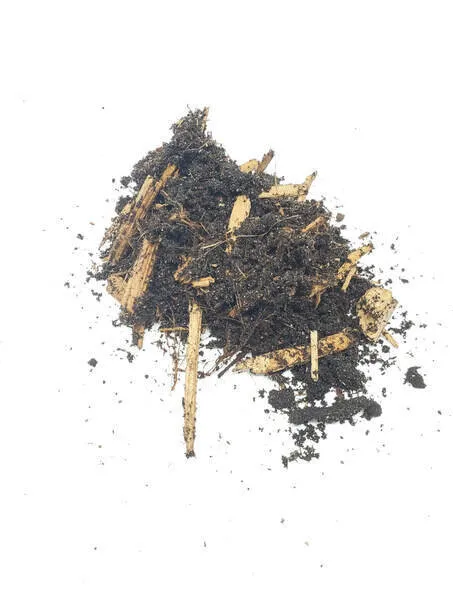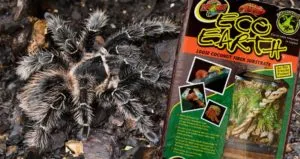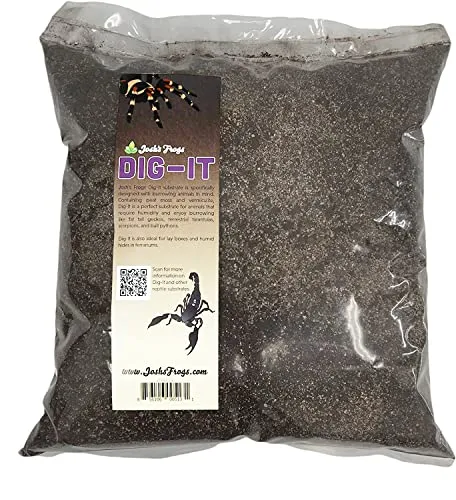Understanding Tarantula Substrate Needs
Choosing the right substrate for your tarantula is a crucial aspect of providing a healthy and thriving environment for your eight-legged friend. The substrate is more than just bedding; it plays a vital role in regulating humidity, facilitating natural behaviors like burrowing, and maintaining overall well-being. A poorly chosen substrate can lead to health issues, molting problems, and a generally unhappy tarantula. This guide will delve into the various factors to consider when selecting the best substrate for your specific tarantula species, ensuring you create an optimal habitat that mimics their natural environment.
Why is Substrate Important for Tarantulas?
The substrate serves multiple essential functions in a tarantula enclosure. First and foremost, it helps to regulate humidity levels, which is critical for the tarantula’s health and molting process. Many tarantula species require specific humidity levels to thrive, and the substrate acts as a moisture reservoir, gradually releasing water into the air. Moreover, the substrate provides a medium for the tarantula to burrow, a natural behavior essential for many species. Burrowing offers security, temperature regulation, and a place to molt. Additionally, a good substrate can help absorb waste and maintain a clean environment, minimizing the risk of bacterial growth and other health problems.
Impact on Humidity Levels

Humidity is a critical environmental factor for tarantulas, and the substrate is a primary means of controlling it within the enclosure. Different substrate types hold varying amounts of moisture, affecting the humidity levels. For species that require higher humidity, such as those from tropical regions, substrates like coconut fiber and peat moss are ideal because they retain water well and release it slowly into the air. Conversely, for arid species, substrates that dry out more quickly, such as a mix of sand and soil, may be more appropriate. Regular monitoring of humidity levels and adjusting the substrate or ventilation accordingly is essential to maintaining a healthy environment.
How Substrate Affects Burrowing Behavior
Burrowing is a natural instinct for many tarantula species, providing them with shelter, security, and a place to molt. The substrate provides the material necessary for burrowing, and the type of substrate chosen significantly impacts the tarantula’s ability to create and maintain its burrow. A substrate that packs well, like a mix of soil and clay, is ideal for species that are heavy burrowers. Other substrates, like coconut fiber, can also allow for burrowing but may require the addition of other materials to maintain the burrow’s structure. The depth of the substrate is also a crucial factor, as tarantulas need sufficient space to create their burrows without hitting the bottom of the enclosure.
Key Factors When Choosing Substrate
Selecting the appropriate substrate involves considering several crucial factors. The primary consideration should be the specific needs of the tarantula species you keep. Different species have different requirements for humidity, burrowing, and overall environmental conditions. Researching the natural habitat of your tarantula species will provide essential insights into the type of substrate they thrive in. Furthermore, consider the substrate’s ability to retain moisture, the ease of maintenance, and the availability of the material. Also, the substrate should be free from pesticides, fertilizers, and other chemicals that could harm your tarantula. Finally, make sure the substrate is appropriate for the size of your tarantula, providing sufficient depth for burrowing and allowing for ease of movement.
Substrate Type Considerations

Several substrate options are available, each with its own advantages and disadvantages. The best choice depends on the tarantula species and the desired humidity and burrowing capabilities. Popular choices include coconut fiber, peat moss, topsoil, and vermiculite/perlite mixes. Each of these materials offers unique properties regarding moisture retention, compaction, and ease of maintenance. Understanding the pros and cons of each type will help you determine the best option for your tarantula’s specific requirements.
Coconut Fiber
Coconut fiber, also known as coco coir, is a popular substrate option made from the husks of coconuts. It is readily available, relatively inexpensive, and offers excellent moisture retention, making it suitable for species requiring higher humidity. It’s also a good choice for burrowing, though it may need to be packed down to maintain burrow structure for some species. Coconut fiber is generally safe and resistant to mold growth, provided the enclosure is properly ventilated. However, it can sometimes be dusty, so it’s essential to rinse it before use. Coconut fiber is an excellent all-around substrate for many tarantula species.
Peat Moss
Peat moss is another excellent choice for maintaining humidity, especially for species from humid environments. It is organic, holds water very well, and has a slightly acidic pH, which can help inhibit the growth of mold and bacteria. However, peat moss can compact over time, and it may need to be mixed with other materials, such as vermiculite or perlite, to improve aeration and drainage. It’s important to ensure the peat moss is free of additives and thoroughly moistened before introducing it to the enclosure. Peat moss is a cost-effective option for many tarantula keepers.
Topsoil

Topsoil, when used in conjunction with other substrates, provides a natural and effective burrowing medium for many tarantula species. It offers a good base for creating stable burrows. When selecting topsoil, ensure it’s free of any fertilizers, pesticides, or other additives that could be harmful to your tarantula. A mix of topsoil with sand or clay can enhance burrowing stability. This is particularly beneficial for species that are heavy burrowers. Ensure the topsoil is properly sterilized to eliminate any potential pests or pathogens before use. It’s often mixed with other substrates to create a more balanced and effective environment.
Vermiculite and Perlite
Vermiculite and perlite are inorganic materials often used to improve drainage and aeration in the substrate. Vermiculite is a mineral that can absorb and retain water, while perlite is a volcanic glass that enhances aeration. These materials are often mixed with other substrates, such as peat moss or topsoil, to create a more balanced environment. They are especially useful in humid environments to prevent the substrate from becoming waterlogged. Alone, they are not suitable as primary substrates but serve a vital role in creating a healthy, well-draining habitat for your tarantula.
Substrate Depth and Tank Size
The depth of the substrate is another critical consideration. The depth should be adequate for the tarantula to burrow comfortably. The size of the enclosure should also influence the amount of substrate used. For terrestrial species, a deeper substrate is often required to allow for extensive burrowing, while arboreal species may need less depth, focusing more on vertical climbing space. As a general guideline, providing a depth of at least two to four inches of substrate for terrestrial species is recommended, with adjustments based on the tarantula’s size and burrowing habits. Always consider the adult size of your tarantula when setting up the habitat.
Maintenance and Cleaning of Substrate

Maintaining the substrate is crucial for the health of your tarantula. Regular maintenance ensures the substrate remains clean, the humidity levels are consistent, and the overall environment is safe. This includes monitoring the humidity, removing waste, and replacing the substrate when necessary. Performing these tasks helps to prevent the buildup of harmful bacteria, maintain a comfortable living space, and extend the life of your tarantula’s habitat.
Monitoring Humidity Levels
Regularly monitoring humidity levels is essential for tarantula care. Use a hygrometer to measure the humidity within the enclosure. The ideal humidity range varies depending on the species, so it’s essential to research the specific needs of your tarantula. If the humidity is too low, you can mist the enclosure with water, add more moisture-retaining substrate, or cover some of the ventilation holes. If the humidity is too high, improve ventilation by opening vent holes and decreasing the frequency of misting. Adjusting the substrate type can help maintain the appropriate humidity.
Removing Waste and Debris
Remove any visible waste, such as uneaten prey items, molted exoskeletons, and fecal matter, regularly. Use a small scoop or tongs to remove these items carefully without disturbing the tarantula excessively. This helps to keep the enclosure clean and prevents the growth of mold or bacteria. Spot-cleaning is a crucial part of substrate maintenance and will extend the life of your substrate. If your tarantula is a burrower, be extra careful when cleaning to avoid collapsing their burrows or causing undue stress.
When to Replace the Substrate

The frequency with which you need to replace the substrate depends on the type of substrate, the size of the enclosure, and the tarantula species. In general, it’s recommended to replace the substrate every few months to a year, or sooner if it becomes excessively soiled or begins to smell. Signs that the substrate needs replacing include a strong odor, mold growth, or a noticeable breakdown of the substrate. When replacing the substrate, completely remove the old material, clean and disinfect the enclosure, and add fresh, new substrate of the appropriate type and depth.
Creating a Safe and Healthy Environment
Choosing and maintaining the correct substrate is a cornerstone of providing a safe and healthy environment for your tarantula. By understanding the importance of the substrate, considering the specific needs of your tarantula species, and following proper maintenance practices, you can create an optimal habitat where your tarantula can thrive. This includes monitoring humidity, removing waste, and replacing the substrate as needed. By following these guidelines, you’ll be well on your way to enjoying a happy and healthy tarantula for years to come.
